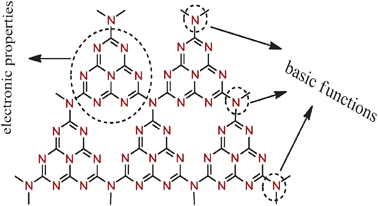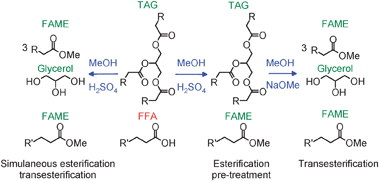 A collaboration of scientists from Germany and China have developed a solid polymeric base catalyst for Knoevenagel condensations and transesterification reactions. The mesoporous catalyst is made from graphitic carbon nitride which has already been shown by the authors as a very promising material due to its remarkable electronic properties and large 2D-surface area (see their recent Chemical Science article here).
A collaboration of scientists from Germany and China have developed a solid polymeric base catalyst for Knoevenagel condensations and transesterification reactions. The mesoporous catalyst is made from graphitic carbon nitride which has already been shown by the authors as a very promising material due to its remarkable electronic properties and large 2D-surface area (see their recent Chemical Science article here).
In their most recent Catalysis Science & Technology article, they illustrate how the incorporated nitrogen atoms display Lewis-base character that can be exploited for organocatalytic C-C coupling reactions, affording high product yield after numerous cycles.
With its ability to catalyse photoredox reactions already proven, and now its base catalytic properties, this really is a multifunctional catalyst which should find application in cascade reactions.
Read the article now:
mpg-C3N4 as a solid base catalyst for Knoevenagel condensations and transesterification reactions
Fangzheng Su, Markus Antonietti and Xinchen Wang











